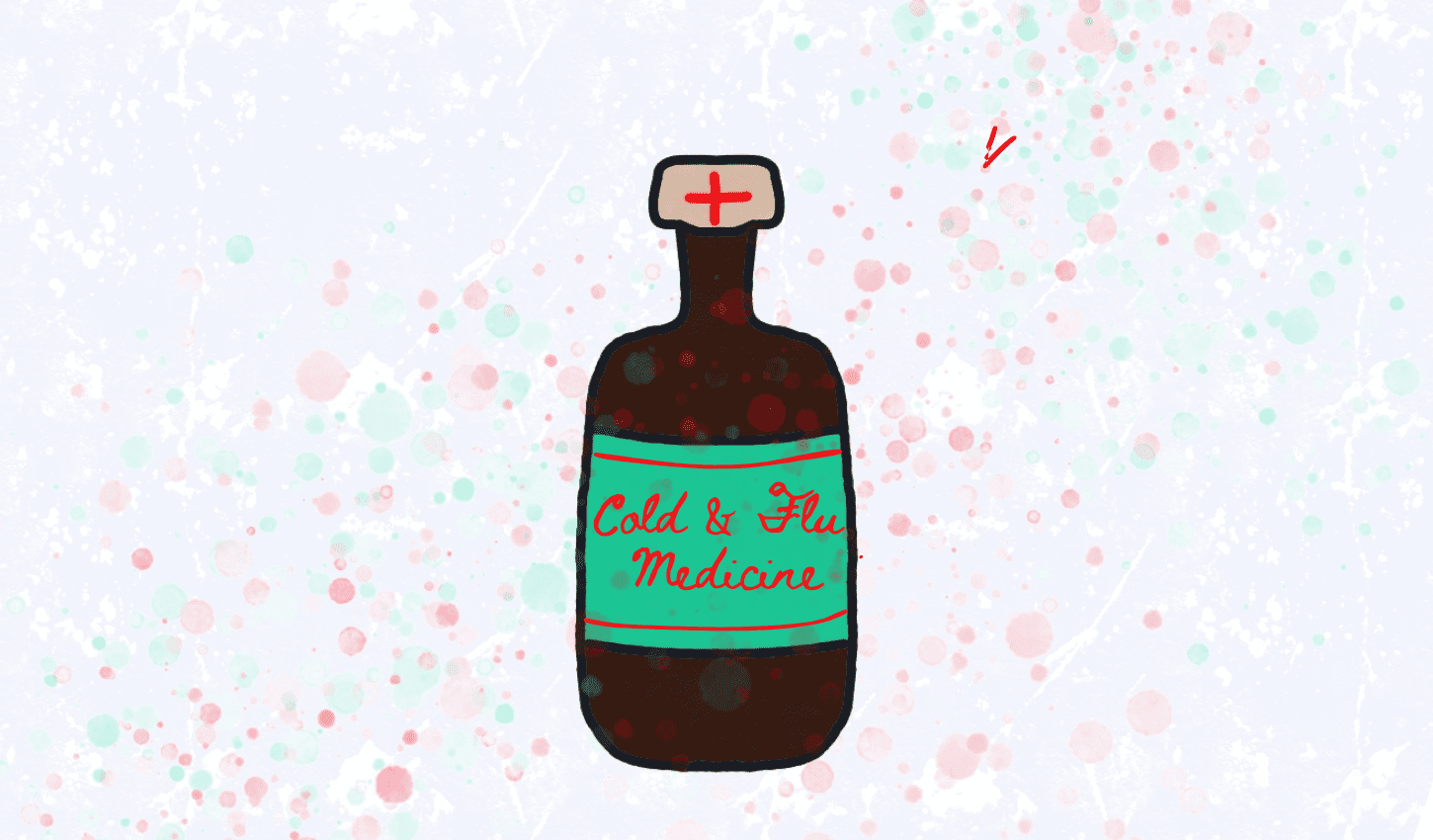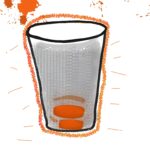Apprehend the 7 most common cold and flu liquid medicines that you can buy over-the-counter (without a prescription). Cold and flu liquid medicines are easily administrative to children and older individuals. Some people also find it onerous to ingest pills or capsules. It can be hard to swallow them as a whole or one has to go through their sweet taste. Also in harsh cold and flu, patients are not in the vicinity to do such stunts. Liquid cold and flu medicines are most opportunistic for children’s administration. Cold and flu are not similar conditions, although they have some common symptoms. Both are viral, but the viral agents are different.
Rhinoviruses, adenoviruses, mild human coronaviruses, respiratory syncytial viruses (RSV), etc can trigger common cold symptoms. Rhinovirus is the most common agent in them. As for the flu, influenza viruses win the game. Influenza A, B, and C strains cause flu symptoms depending upon their abundance and the time of the year. The severity of fever, pain, and congestion is higher in the flu than in the common cold.
How Cold And Flu Liquid Medicines Relieve the Symptoms?
Some medicines can serve for both cold and flu symptoms. Common symptoms of cold and flu such as sore throat, irritation, sneezing, wheezing, and sinusitis can be treated by medicines that provide relief to both conditions. However, in the case of antiviral medicines, specificity is noted. As both conditions have different viral agents, both have different medicines that specifically target wanted agents. But, unfortunately, most antivirals are not in the liquid form. They are more common in the form of pills or capsules or can be suspensions. Following is the overview of how cold and flu liquid medicines provide relief to the developing symptoms. People who are keen to know how cold and flu liquid medicines work simply should not bypass this section.
Soothing Stuffy Nose
Cold and flu liquid medicines act as decongestants to provide relief to nasal congestion. Nasal congestion happens when blood flow to the nasal passages increases, resulting in swelling of blood vessels surrounding nasal pathways. Blood vessel dilation is an immune response to the presence of irritants in the respiratory route. Blood vessels dilate to improve the flow of blood, including immune cells to counter irritants or viral agents. Although blood vessel dilation is healthy to ease the delivery of immune and white blood cells, it can also cause swelling and congestion in the nasal route.
The presence of irritants also causes the mucus to thicken, worsening congestion and blockage. Nasal congestion makes breathing difficult or results in sneezing. It aggravates the vitality of asthma or other respiratory patients. So, decongestants that allow the blood vessels to contract or reverse congestion are helpful in tracking recovery. Cold and flu liquid medicines contain phenylephrine or pseudoephedrine as active decongesting agents. These agents act on adrenergic receptors on smooth blood vessels, letting them contact. These medicines make breathing easy and help in clearing of airways.
Soothing Cough Reflexes
Cold and flu liquid medicines have dextromethorphan to soothe coughing. Dextromethorphan acts on the brain cells to minimize the initiation of the cough reflex. When sensory receptors detect unknown agents in the respiratory tract, they send signals to the brain to work on inducing cough. Cough can be dry or wet, only confirming the expel of irritants from the respiratory tract. The brain area that works as a cough-controlling center has N-methyl-D-aspartate (NMDA) receptors. These receptors in the medulla oblongata show response to glutamate. Glutamate is a neurotransmitter, excitatory, that supports the activation of NMDA receptors. NMDA receptors open channels for the passage of electrical signals to induce coughing.
Dextromethorphan blocks these NMDA receptors by binding to them, preventing their activation. Dextromethorphan does not let the electrical signals from the respiratory tract activate the cough reflex. In this way, it soothes coughing. Coughing is an irritant-expelling reflex, but too much coughing is inconvenient and painful. Cold and flu liquid medicines relieve the coughing reflexes, although they have just a temporary effect.
Lowering Down High Fever And Pain
Medicines containing acetaminophen (also known as paracetamol) can lower the high temperature in fever and can also desensitize pain receptors. Acetaminophen works to minimize the production of prostaglandins. Prostaglandins are responsible for raising body temperature and highlighting pain receptors. They do so in helping the body to know of danger. Fever and pain are on the plus side to get rid of harmful pathogens or viral agents. But, sometimes, fever and pain become a lot more troublesome to handle. At this point, acetaminophen comes into the game. It blocks the production of prostaglandins by inhibiting the activity of COX enzymes. COX enzymes are the part and parcel for producing prostaglandins.
Another pain reliever and fever reducer; aspirin has the same effects but with somewhat different physiology and side effects. Both target the production of prostaglandins, but acetaminophen gets an optimal position due to its specific action only in the central nervous system (CNS). Whereas, aspirin affects the prostaglandins production in both CNS and PNS (peripheral nervous system). Aspirin’s action on the peripheral nervous system gives rise to potential side effects. Aspirin can affect the gastrointestinal lining, stomach walls, blood viscosity, etc in the peripheral nervous system. That’s why, acetaminophen is a more healthy approach, and common cold and flu liquid medicines contain acetaminophen instead of aspirin to relieve pain and fever.
Thinning Mucus
The mucus thinning effect is almost present in most of the cold and flu liquid medicines in any way. Decongestants also enhance the mucus thinning effect to relieve congestion caused by thick mucus. Guaifenesin is an active ingredient in such medicines that thins mucus in multiple ways. It enhances the mucus-secreting goblet cells to produce more mucus. Apparently, it seems that more mucus would cause more congestion and blockage, but more mucus production dilutes the existing thick mucus. The mucus thickens when it traps pathogens or irritants.
When goblet cells produce more mucus, it increases the volume of mucus and makes it clearing easy. Thin mucus is easy to flow and helps clear the airways. Furthermore, guaifenesin also thins mucus by breaking the chemical bonds within mucus. It makes it less adhesive both from within and with the respiratory surfaces. Breaking of adhesive bonds thins mucus and further improves its expel either through sneezing or coughing. Thick mucus sticks in the airways and worsens breathing. It brings forward the stuffy nose and congested airways.
Preventing Allergic Reactions
The presence of irritants and disturbing particles in the nasal route can cause the release of an allergic chemical, histamine. White blood cells, specifically mast cells and basophils, produce histamine to provoke allergic reactions. Although allergy sounds like an abnormality, which no doubt, it is an abnormality, but not always have cons. Allergy induction also has pros and the body activates allergic pathways to help the body fight and remove pathogens. Yes, the process is somewhat complex. Histamine causes the dilation of blood vessels, which causes swelling or inflammation. The purpose of blood vessel dilation is already discussed in the first point about decongestants. Wide blood vessels improve the blood flow and make the mobilization of immune cells easy to the site of infection or irritation.
Additionally, histamine enhances mucus production (to thin mucus), but sometimes this production gets too high that it gives rise to runny nose (rhinorrhea), postnatal drip, etc. Histamine boosts the coughing and sneezing reflux in order to expel irritants from the respiratory tract. This can result in excessive coughing or sneezing, making the throat sore and painful. In order to relieve these allergic symptoms temporarily, antihistamines are prescribed. Antihistamines can be first-generation (doxylamine, diphenhydramine, etc.) or can be second-generation (loratadine, cetirizine, etc.). First-generation antihistamines do not cause sleep or drowsiness and are best for the daytime while the opposite is for second-generation antihistamines.
7 Cold And Flu Liquid Medicine Names With Explanations
Following is a comprehensive overview of cold and flu liquid medicines, with their brand names, active chemicals, and their mode of working in the body. These medicines are common in liquid form (either as suspension or solution) over the counter.
1. DayQuil
DayQuil is the daytime cold and flu liquid medicine. It contains acetaminophen as an analgesic (pain reliever) and an antipyretic (fever-reducer), dextromethorphan to suppress the reflex of coughing, and phenylephrine to act as a decongestant. The combination of these ingredients provides soothing from pain, fever, coughing, stuffy or blocked nose, etc.
2. NyQuil
NyQuil has same ingredients as DayQuil plus an antihistamine. The presence of first-generation antihistamines (doxylamine) makes NyQuil a nighttime medicine. NyQuil has sedating effects for inducing sleep. The presence of antihistamines further enhances the medicinal properties of NyQuil as compared to DayQuil. Doxylamine also soothes sore throat, inflammation, runny nose, itching, and sneezing.
3. Robitussin
Robitussin is a liquid cold and flu medicine that is basically a cough suppressant. It acts on the brain center to numb or desensitize the response to coughing. Although coughing is a saving grace to clear throat and nasal passage, excessive coughing becomes irksome and adds to the inconvenience of the patient. Robitussin provides temporary relief to coughing and soothes the throat.
4. Vicks Formula 44
Vicks Formula 44 is a cold and flu liquid medicine, containing the same ingredients as Robitussin. But in some formulations of Vicks Formula 44, it can also contain guaifenesin and phenylephrine. Guaifenesin thins mucus and phenylephrine relieves nasal and respiratory congestion.
5. Alka-Seltzer Plus Cold and Flu
Alka-Seltzer Plus Cold and Flu contains acetaminophen, dextromethorphan, and either phenylephrine or guaifenesin. Above are the complete details of how these ingredients work to relieve the symptoms of cold and flu. Alka-Seltzer Plus Cold and Flu is available as effervescent tablets that dissolve in water to form a solution.
6. Theraflu
Theraflu is a cold and flu liquid medicine that contains a diversity of ingredients to provide relief to the symptoms in the form of a single medicine. It contains acetaminophen, decongestants, and antihistamines. The combined effect of these provides relief to the common cold and flu symptoms such as runny nose, congestion, pain, low-grade fever, etc.
7. Mucinex
Mucinex specifically contains guaifenesin as an active component. Guaifenesin thins mucus to relieve congestion and augments the clearing of the throat by expelling thin mucus through sneezing. Thin mucus soothes the throat and relieves difficulty in breathing.
Conclusion
These 7 cold and flu liquid medicines are available for treatment without a prescription. But care and concern should be taken in the application of such medicines. Long-term or misuse of these medicines can have adverse or lethal effects on health. If the condition is advancing on the wrong path after using these medicines, it is recommended to seek professional advice from a medical doctor. This blog has informational and helpful intent in providing information about the usage and working principles of cold and flu liquid medicine





As fellow creators and enthusiasts, we can learn so much from each other. Whether it’s sharing ideas, providing feedback, or simply enjoying each other’s content, I believe that together, we can create something truly remarkable.